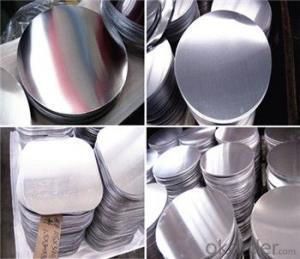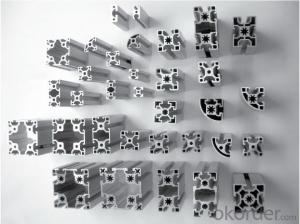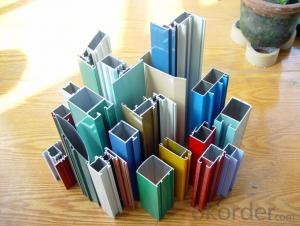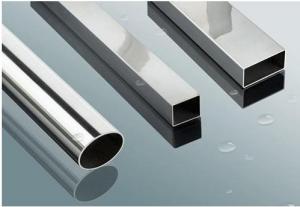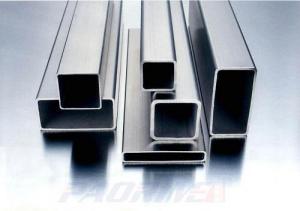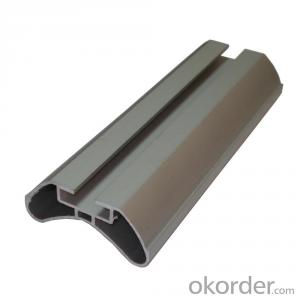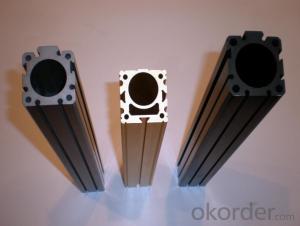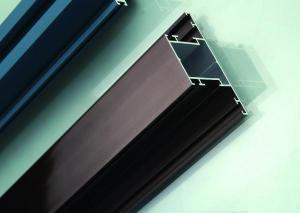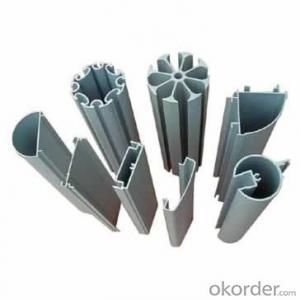T Slot Aluminum Extrusion Profiles - High Quality Aluminium Circle Sheet with a Good Price
- Loading Port:
- Qingdao
- Payment Terms:
- TT OR LC
- Min Order Qty:
- 10000 kg
- Supply Capability:
- 100000 kg/month
OKorder Service Pledge
OKorder Financial Service
You Might Also Like
Specification
Aluminium Circle Sheet

Aluminium circle sheet introduction
Our company to introduce advanced aluminium circle sheet production equipment, effectively improve production efficiency and material utilization, shorten the delivery cycle. Our company strengthened the control of the grain size and elongation of the coil, Respectively cold rolled and hot rolled aluminium circle sheet was launched,and cover 1, 3, 5, 8 series alloys. Complete product range, thickness 0.7-6.0 mm, diameter 100-1200 mm, tolerance in line with national standard requirements.
Aluminium circle Picture
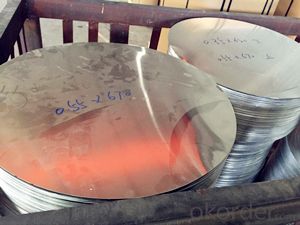
Aluminium circle sheet Features
1.Aluminium circle sheet specifications complete,conventional size outside,can provide the most thin 0.5 mm, the most thick 6.5 mm aluminium circle sheet;
2.Aluminium circle sheet surface performance is good, to ensure no obvious scratches, oil, oxidation, dark spots and so on;
3.Aluminium circle sheet thickness> 1.0 mm, to ensure that the finished side of the neat no burrs;
4.The good control of grain size and elongation in early stage,to ensure that the aluminium circle sheet of the deep drawing and spinning performance, effectively avoid the late processing may occur when the drawing, lotus leaf, the ear rate of high bad phenomenon;
5.Strictly control the coil of the alloy, the state, performance, to ensure the accuracy and diversity of aluminium circle sheet provided;
6.The introduction of advanced and efficient production equipment, improve the production efficiency of aluminium circle sheet and the utilization rate of material and shorten the production cycle, provide real-time and convenient service for the customer;
7.Aluminium circle sheet detailed classification, according to different purposes and requirements, customers can choose accurate category;
8.Products comply with RoHS and REACH the environmental protection standard;
9.Product packaging firm, in line with domestic sales and international export standards.
Introduction of our company
Our company is a professional Aluminium Strip manufacturer and Aluminum Circles manufacturers,mainly supply Aluminium Coil,Aluminum Circles,Aluminium discs,Aluminum Sheet,Aluminum Strip, Household Aluminum Foil,Aluminum Foil for Pharmaceutical Packaging,Aluminum Foil Tape,Aluminum Foil for Air Conditioner,Aluminum Foil for Container etc. series of aluminum products, sincerely welcome everyone to visit.
- Q: What are the durability characteristics of aluminum profiles?
- Aluminum profiles are known for their exceptional durability characteristics. Due to the inherent properties of aluminum, such as its corrosion resistance, lightweight nature, and high strength-to-weight ratio, aluminum profiles are highly durable and long-lasting. One of the key durability characteristics of aluminum profiles is their resistance to corrosion. Aluminum naturally forms a thin oxide layer on its surface, which acts as a protective barrier against rust and other forms of corrosion. This makes aluminum profiles suitable for outdoor applications where they are exposed to harsh environmental conditions, such as rain, snow, and UV radiation. Additionally, aluminum profiles are able to withstand extreme temperatures without compromising their structural integrity. They have a high melting point and can resist thermal expansion and contraction, making them ideal for use in environments with fluctuating temperatures. Another important aspect of the durability of aluminum profiles is their strength. Despite being lightweight, aluminum is incredibly strong and can withstand heavy loads and impacts. This strength-to-weight ratio makes aluminum profiles a popular choice in various industries, including construction, automotive, and aerospace. Furthermore, aluminum profiles are highly resistant to wear and tear. They have excellent resistance to abrasion and can maintain their structural integrity even after prolonged use. This makes them suitable for applications that require long-term durability, such as window frames, door frames, and structural components. In summary, aluminum profiles possess remarkable durability characteristics due to their corrosion resistance, lightweight nature, high strength-to-weight ratio, thermal stability, and resistance to wear and tear. These qualities make them a reliable choice for a wide range of applications, ensuring their longevity and performance over time.
- Q: Is it possible to utilize aluminum profiles in interior design projects?
- <p>Yes, aluminum profiles can be used for interior design. They are popular for their strength, durability, and modern aesthetic. Aluminum profiles are lightweight, easy to install, and resistant to corrosion, making them suitable for various applications such as window frames, door frames, shelving systems, and decorative elements. They can be powder-coated or anodized to achieve different colors and finishes, allowing for a wide range of design flexibility.</p>
- Q: How much is the 60 series aluminum frame bridge standard size, how much is the size of the fan
- [60] galuminium Qianjin aluminum series insulating aluminum window size 60x53.5, window size 67.8x68.6.
- Q: How do aluminum profiles contribute to sustainable packaging solutions?
- Aluminum profiles play a crucial role in promoting sustainable packaging solutions due to their numerous eco-friendly properties. Firstly, aluminum is a highly recyclable material, and its profiles can be easily recycled without losing their inherent qualities. This allows for a closed-loop recycling system, reducing the need for new raw materials and minimizing waste. Additionally, aluminum profiles offer exceptional strength and durability, ensuring that packaging made from these profiles can withstand rigorous handling and transportation. This durability reduces the likelihood of damage or breakage, resulting in less product waste and minimizing the need for additional packaging materials. Moreover, aluminum profiles provide excellent barrier properties, protecting the contents of the packaging from external factors such as moisture, oxygen, light, and temperature variations. This helps to extend the shelf life of the products, reducing food waste and ensuring that goods remain fresh and safe for consumption. Furthermore, aluminum profiles are lightweight, which contributes to energy savings during transportation. The lightweight nature of aluminum packaging allows for reduced fuel consumption and lower carbon emissions, making it an environmentally friendly choice. Lastly, aluminum profiles are resistant to corrosion, ensuring that the packaging remains intact and functional for an extended period. This longevity reduces the need for frequent replacement, saving resources and minimizing the overall environmental impact. In summary, aluminum profiles contribute to sustainable packaging solutions by being recyclable, durable, providing excellent barrier properties, lightweight, and corrosion-resistant. These properties help to minimize waste, reduce energy consumption, extend product shelf life, and lower carbon emissions, making aluminum profiles an ideal choice for eco-conscious packaging solutions.
- Q: Can aluminum profiles be used for furniture?
- Yes, aluminum profiles can be used for furniture. Aluminum is a lightweight, durable, and corrosion-resistant material, making it suitable for various furniture applications such as tables, chairs, and frames. It offers versatility in design, allowing for sleek and modern aesthetics. Additionally, aluminum profiles can be easily customized and are available in different finishes, making them a popular choice in the furniture industry.
- Q: This question asks about the various types of aluminum profiles that are specifically used in roof insulation systems.
- <p>Aluminum profiles for roof insulation systems are designed to provide structural support and thermal insulation. Common types include: 1) U-channels, which are used as support beams; 2) C-profiles, used for connecting and securing insulation boards; 3) H-profiles, serving as main rafters or purlins; 4) Z-profiles, often used as secondary rafters or for sealing; 5) T-profiles, used for creating airtight seals at the edges; and 6) L-profiles, which can be used for corner reinforcements. These profiles come in various sizes and thicknesses to suit different roofing specifications and insulation requirements.</p>
- Q: Can aluminum profiles be used in retail store fixture manufacturing?
- Yes, aluminum profiles can definitely be used in retail store fixture manufacturing. Aluminum profiles are widely used in the retail industry due to their versatility and durability. They can be easily customized to create various fixtures such as display shelves, clothing racks, signage frames, and product showcases. Aluminum profiles offer several advantages for retail store fixture manufacturing. Firstly, they are lightweight, making them easy to handle and install. This allows for quick and efficient fixture assembly and rearrangement. Secondly, aluminum profiles are highly resistant to corrosion, ensuring longevity and minimal maintenance. They are also available in a variety of finishes, allowing for customization to match the store's aesthetics. Additionally, aluminum profiles offer excellent structural strength, which is crucial for supporting heavy merchandise and ensuring the safety of customers. They can be easily shaped and connected using various joining techniques, enabling the creation of complex fixture designs. Moreover, aluminum is a sustainable material as it is recyclable, making it an environmentally friendly choice for retail store fixture manufacturing. This aligns with the growing trend of sustainability in the retail industry. In conclusion, aluminum profiles are an ideal choice for retail store fixture manufacturing due to their versatility, durability, lightweight nature, resistance to corrosion, customization options, structural strength, and sustainability.
- Q: What are the environmental effects of utilizing aluminum profiles in the construction industry?
- <p>Yes, there are environmental impacts associated with using aluminum profiles in construction. Aluminum production is energy-intensive, which contributes to greenhouse gas emissions. However, aluminum is recyclable, and its recycling process requires significantly less energy than primary production, reducing environmental impact. Additionally, aluminum profiles are lightweight, which can reduce transportation emissions. Despite these benefits, concerns remain about the energy used in aluminum production and the potential for leaching of aluminum into the environment, which can affect soil and water quality.</p>
- Q: Where is the exact location? TwentyBecause I was doing aluminum sales, want to go to the market!Where is the specific market aluminum sales, as long as there is, I have to go around! Say where it is! For example, what area, what road, how many?! Since I went to Chengdu for the first time, please tell me more about it. Thank you!
- 3rd Ring Rd Sichuan Shaanxi Home Furnishing District 6 Fujimori Mi Avenue Interchange panda is full profile, near the panda road hole profile market two large star market material wholesale. The variety is complete. The interchange in the North Sanhuan.
- Q: What specific considerations should be taken into account when using aluminum profiles in extreme temperatures, be it cold or hot?
- <p>Aluminum profiles are generally durable and can withstand a wide range of temperatures. However, in extremely cold climates, thermal contraction can occur, potentially leading to gaps or cracks. It's important to allow for expansion and contraction in the design. In hot climates, while aluminum doesn't lose strength, it can expand and warp if not properly supported. Additionally, it can become hot to the touch, which may require protective measures to prevent burns. Always ensure that aluminum profiles are of high quality and are designed for the specific climate conditions they will be exposed to.</p>
Send your message to us
T Slot Aluminum Extrusion Profiles - High Quality Aluminium Circle Sheet with a Good Price
- Loading Port:
- Qingdao
- Payment Terms:
- TT OR LC
- Min Order Qty:
- 10000 kg
- Supply Capability:
- 100000 kg/month
OKorder Service Pledge
OKorder Financial Service
Similar products
Hot products
Hot Searches
Related keywords
